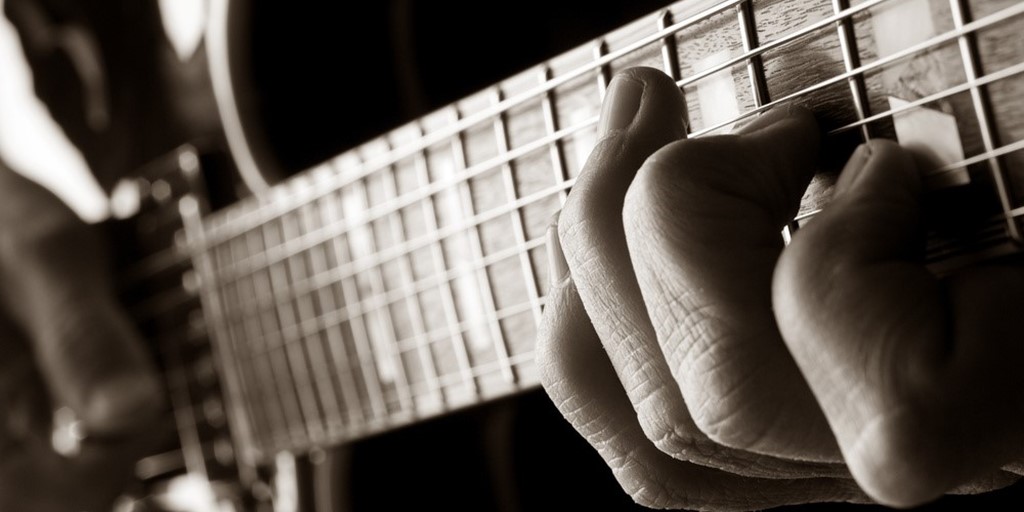

We’ve all heard the saying ‘no pain, no gain’—and playing the guitar can come with its fair share of pain. However, some injuries are more painful than they’re worth, especially if they prevent you from playing.
We’ve rounded up the most common guitar-related injuries and explained how to avoid them.
1. Blisters
They’re not the most serious guitar-related injury, but blisters on the fingertips are a hurdle many guitarists face when first starting out.
The skin on our fingertips is naturally soft and fleshy. When it repeatedly rubs against the rough surface of a steel guitar string, the top layers of skin wear away, and blisters develop.
You can avoid blisters or open wounds by allowing your fingertips adequate rest between practice sessions or by avoiding pressing down too hard against the fretboard.
You may also want to start with nylon strings, as they can be more forgiving whilst your skin adapts to the process of playing the guitar.
Unfortunately, there’s no real way to avoid blisters—as all guitarists experience them at some point—but it’s important to let them heal between practice sessions. Otherwise, you could cause soft tissue damage to your fingers.
The more you play (and let your fingertips heal), the harder they’ll become, and you’ll be much less likely to develop blisters.
Related: How to avoid finger pain when playing the guitar
2. A snapped string to the face
Ask most serious guitarists, and they’ll tell you they’ve had a string break and hit them in the face while tuning at least once.
Some might even be part of the exclusive ‘guitar string in the eye’ club (of which no one aspires to be a member). It’s unfortunately a pretty big club, as online forums and YouTube will tell you.
However, you can take a few simple steps to stop getting this unfortunate guitar-related injury.
If you regularly play live, consider restringing your guitar at least once a month. You might also want to look at your frets, bridge and tuning posts for signs of wear and tear.
3. Tennis elbow
Tennis elbow—or lateral epicondylitis, to give it its hard-to-pronounce technical term—is a condition that affects the upper forearm.
If you have tennis elbow, you’ll feel pain when you lift or bend your arm, grip an object, or twist your forearm when opening something like a door.
The cause of it? Overusing the muscles attached to your elbow, which help straighten your wrist. So, if you over-practice on the guitar and put more pressure on the fretboard than you need to, you might need someone to open a door for you!
In the meantime, there are ways to get rid of tennis elbow if you’re unlucky enough to get it. Check out the video below for some tips.
4. Carpal Tunnel Syndrome
While it’s one of the most common guitar-related injuries, a quick Google search will unveil how prevalent carpal tunnel syndrome is in all musicians. It’s a real showstopper, so it never hurts to increase your awareness.
Symptoms include tingling, pain, numbness or discomfort in the index and middle fingers and thumb, which is hardly ideal when guitarists use all three most often to play.
Given that the chief cause of carpal tunnel syndrome is excess pressure on the wrist, it’s no surprise that guitarists are particularly at risk of getting it.
But fear not—if you get this injury, there are plenty of strengthening exercises you can do to make sure you’re back on stage in no time. Watch the video below for some examples.
Related: 10 guitar learning apps you need to download
5. Tendonitis
Arguably the most common of the guitar-related injuries, tendonitis refers to the inflammation of tendons—with guitarists often suffering in their wrists.
Most of them describe the feeling as a ‘dull ache’, as tendonitis causes muscle tightness, connective tissue constriction and pain.
As you may have guessed, it is caused due to friction and strain produced due to overuse of the wrist muscles. If you get it due to long hours and bad posture during guitar practice, try this follow-along video for guitarists explaining how you can relieve the symptoms of tendonitis.
6. Tinnitus
It isn’t easy to describe this condition to someone who hasn’t experienced it, but it’s usually a ringing, buzzing or humming sound in your ears or your head.
For some people, it comes and goes. But for others, it can linger for long periods or become a constant issue.
Tinnitus is usually the result of damage to the inner ear due to loud noise exposure, especially for musicians who don’t have sufficient hearing protection, like headphones or earplugs.
You should invest in this if you want to prevent tinnitus, which is one of the most common guitar-related injuries. This is vital if you’re performing live or if you like to crank your amp to full blast during practice.
Healthline has some great advice surrounding tinnitus treatment and remedies, so be sure to check this out if you’re currently experiencing it.
Specialist musician insurance with Insure4Music
Worried you could sustain a serious injury whilst playing the guitar? You may want to protect yourself through specialist musician insurance.
With Insure4Music, you can be covered for Personal Accidents in case you sustain a serious injury during a performance and cannot work or earn money for a long period.
You can also protect your guitar from theft, loss, or damage through the option of bespoke instrument insurance.
Click here to learn more about how we can help or get an instant online quote today.
Please note the information provided on this page should not be taken as advice and has been written as a matter of opinion. For more on insurance cover and policy wording, see our homepage.
